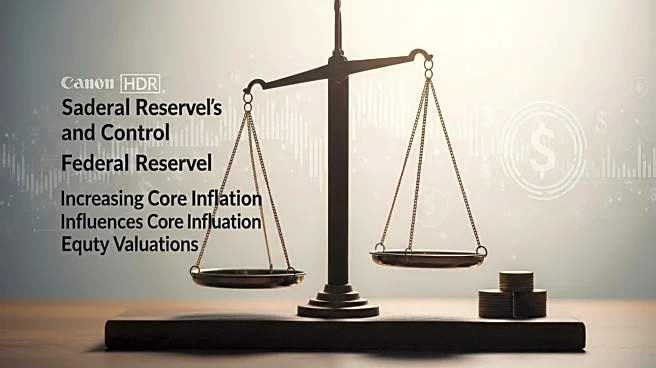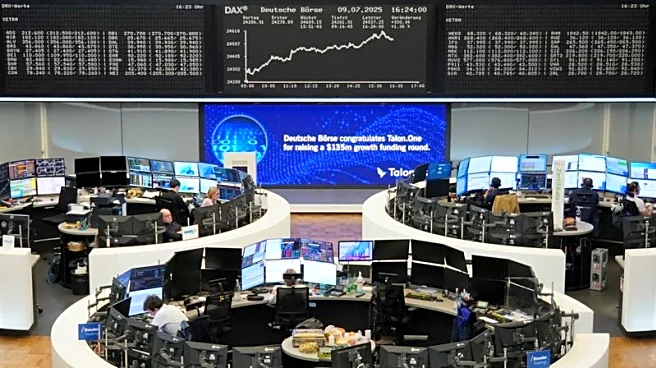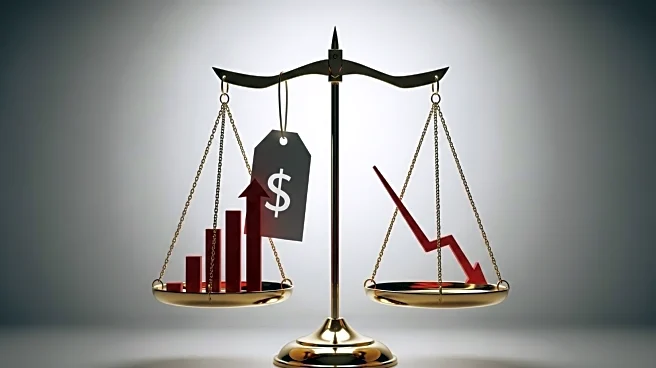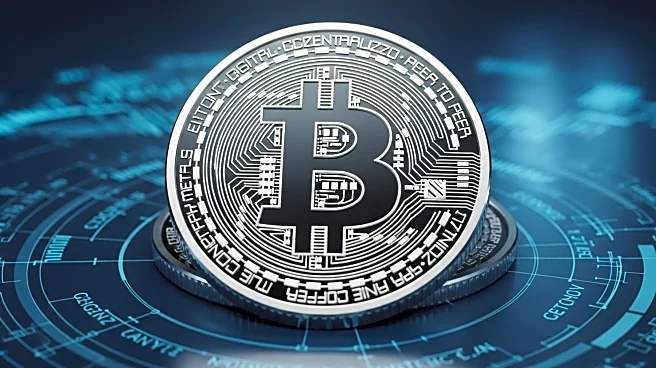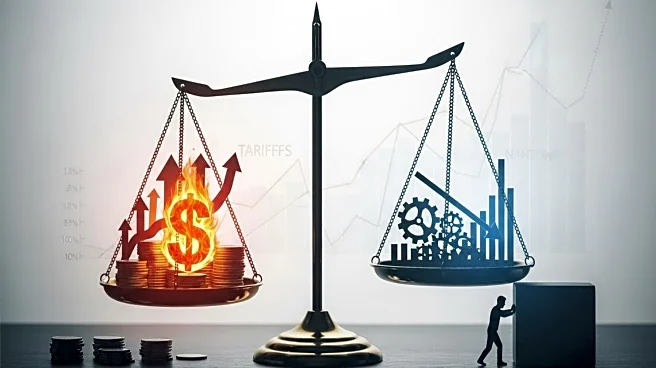What is the story about?
What's Happening?
The July 2025 PCE Price Index report indicates that headline inflation remains steady at 2.6% year-over-year, while core inflation has risen to 2.9%, marking the highest level since February 2025. This increase is attributed to Trump-era tariffs and ongoing supply chain issues. The Federal Reserve, in its July policy meeting, decided to keep interest rates unchanged at 4.25-4.50%, reflecting a cautious approach as inflation continues to exceed its 2% target. Despite the labor market's resilience, with a 4.1% unemployment rate in June, weaker job growth in July has raised concerns about the possibility of a soft landing. Markets are now anticipating a 75% chance of a 25-basis-point rate cut in September.
Why It's Important?
The persistent inflationary pressures and the Federal Reserve's cautious stance have significant implications for U.S. economic stakeholders. Investors face a volatile environment as they navigate the dual challenges of higher inflation and softening labor data. The Fed's focus on core PCE inflation suggests a commitment to price stability, which could impact sectors sensitive to interest rates, such as real estate and utilities. Meanwhile, sectors like Information Technology and Communication Services may benefit from their pricing power and demand resilience. Commodities and precious metals are gaining traction as hedges against inflation and geopolitical risks, offering diversification opportunities for investors.
What's Next?
As the Federal Reserve approaches its 2% inflation target, the key challenge will be balancing the risks of tightening monetary policy too late against the costs of acting too soon. Investors are advised to focus on high-quality equities with strong balance sheets and pricing power, while diversifying into inflation-hedging assets like commodities. The anticipated rate cut in September could provide a floor for equities, but stakeholders must remain agile in response to shifting macroeconomic signals.
Beyond the Headlines
The ongoing inflationary pressures highlight the embedded impact of tariffs on goods prices, with businesses passing costs to consumers. This situation underscores the importance of strategic sector positioning in a late-cycle environment. Companies in semiconductors and pharmaceuticals, driven by structural trends like AI and aging populations, may offer resilience against short-term inflationary shocks. The broader economic landscape requires careful navigation to mitigate risks and capitalize on opportunities.
AI Generated Content
Do you find this article useful?
